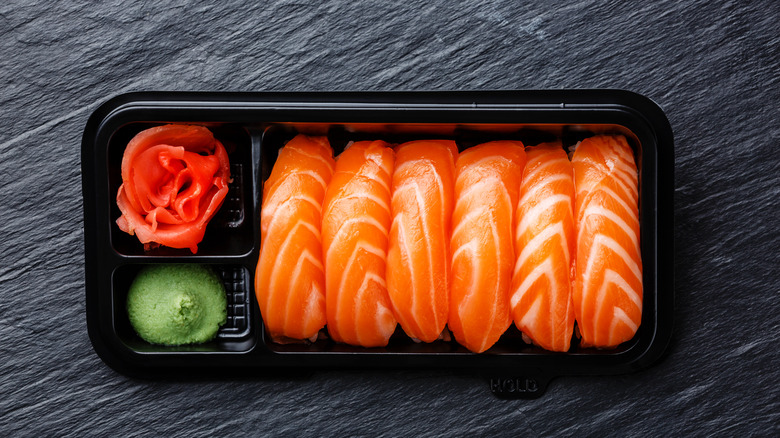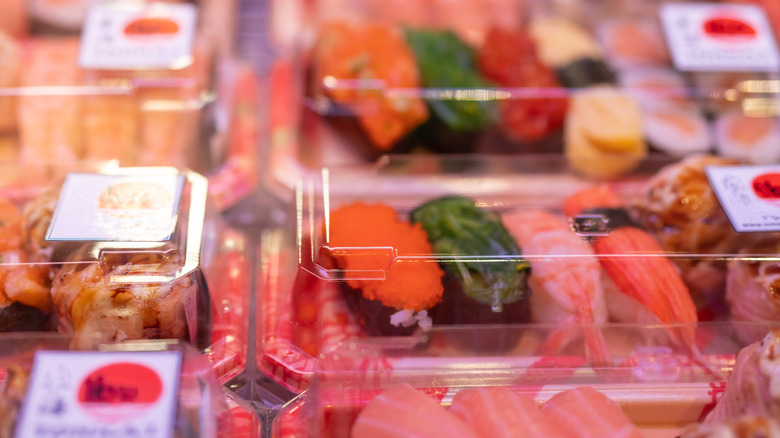How To Scope Out The Grocery Store Sushi Bar Before Buying
The mention of supermarket sushi often garners mixed reactions. Some praise its convenience and accessibility, whereas others find fault with its quality and lack of artistry as a result of mass production. Regardless of where you stand on the debate, we're of the mindset that the uramaki and nigiri sitting on refrigerated store shelves can be both edible and enjoyable, so long as you take a few things into consideration while shopping.
When it comes to the fish-laden rolls sold at your local grocery store, there's no debate that a high-end sushi restaurant will reign supreme due to a more varied selection and a higher integrity thanks to being carefully crafted at the hands of an experienced itamae (sushi chef). However, one thing to help put you at ease is that both supermarket and restaurant sushi must adhere to the same food safety standards proposed by the FDA, which aims to limit the risk of foodborne illness. That said, not all grab-and-go sushi is created equal, which is why you should be diligent about how you shop for the (hopefully) fresh fare.
Of the many things to bear in mind, the best rule of shopping for sushi at the grocery store is to keep an eye on cleanliness. If the sushi chef's workstation is tidy and the tiny display case consists of neatly packaged and properly labeled rolls, chances are that you're in good hands. Of course, that's not the only thing of which to take note.
Selecting the best supermarket sushi
Prior to adding sushi to your shopping cart, there are several other things to watch for that can help you avoid a poor dining experience and potential food poisoning. Along with taking comfort in an orderly prep station and a good-looking array of options, it's essential to really examine the freshness of the fish used — steer clear of sliminess, browning, and rolls that reek. Plus, don't forget to check out the expiration stickers either, as sushi was meant to be eaten the day it was made. As an extra measure, many grocers require they note the time it was packaged down to the five-minute mark.
Additionally, notice whether the majority of sushi offerings hide behind a host of sauces. If all of the maki and uramaki are drizzled with sriracha mayo or teriyaki sauces, that might actually indicate that the rolls aren't as fresh as they could be. Rather than let fresh fish speak for itself, using the sauce as a tool to infuse (or, in this case, mask) flavor may warn of faded quality.
Alternatively, if there's little about the idea of shopping for sushi at the market that puts you at ease, there's also the option of avoiding raw rolls in favor of varieties that use cooked fish, only vegetables, or imitation seafood, like the always-reliable California roll. Nevertheless, should you still have any doubts, it's best to rely on your instincts and simply skip the supermarket sushi and satisfy your cravings omakase-style.

